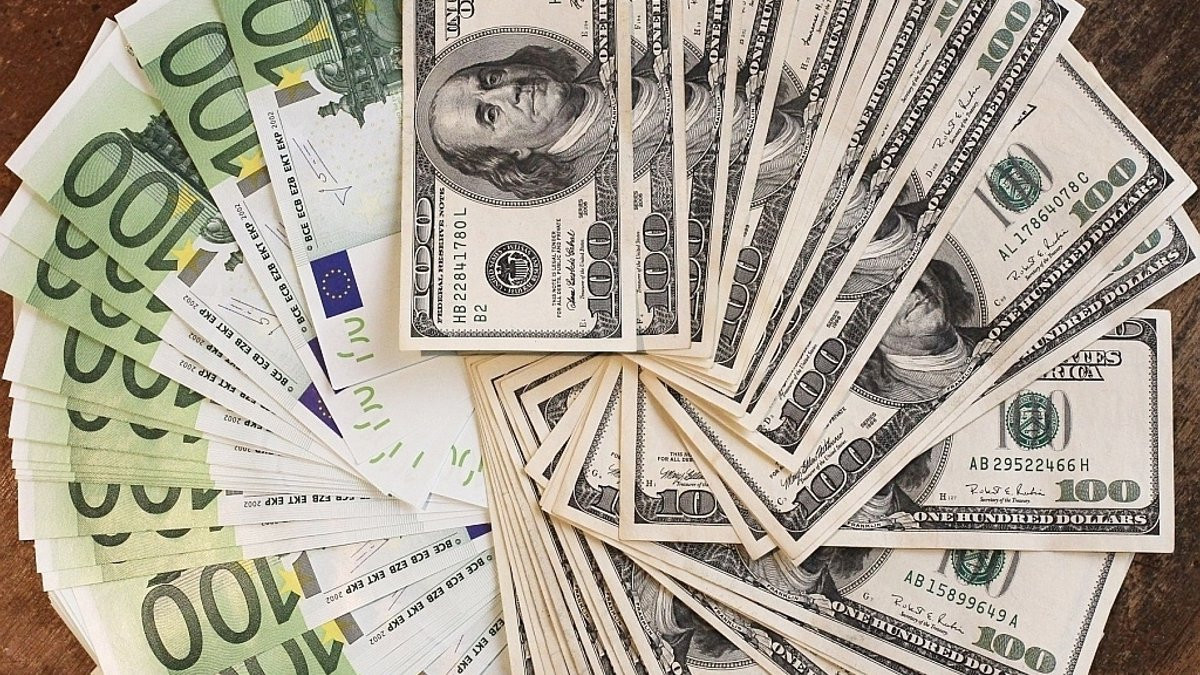
The US currency started the week on a positive note, approaching a five-week peak and trying to gain a foothold in high positions. Amid a steadily growing dollar, the relative success of its rival in the EUR/USD pair, namely the euro, pales. The European currency is struggling to stay afloat, but it is not retreating.
The dollar's growth was promoted by the hawkish position of the Federal Reserve. Ahead of the Jackson Hole meeting later this week, the greenback is showing confidence. USD is supported by a high probability of continued aggressive tightening of the monetary policy by the central bank. Recall that at the end of last week, some representatives of the Fed announced their readiness to further raise rates amid concerns about the ever-growing inflation.
However, the problem is the strengthening of the bearish sentiment on the US currency. For three weeks, market players have been reducing their positions on the growth of USD. At the same time, large hedge funds increased weekly dollar sales by 6%. However, amid off-scale inflation in the US and a large overbought greenback, there is not a single signal indicating a decline in the USD index.
Currently, the demand for the dollar remains in force, as ahead of the meeting in Jackson Hole, investors are again paying attention to this reliable protective asset. Against this background, the Bloomberg Dollar Spot Index has grown significantly, which demonstrates the USD exchange rate against a basket of key currencies of a number of countries. At the end of last week, this indicator was at its high, adding more than 2%. According to analysts, this is the most significant weekly increase since April 2020.
In the current situation, the European currency has the hardest time, which has reached a three-week low against the American one. The growth of bearish sentiment on the euro among investors contributed to a significant weakening of the euro. Many market players have taken this position due to the deterioration of the economic situation in Europe. According to Bank of New York Mellon estimates, the bearish sentiment towards the EUR has peaked over the past two years. The reasons are investors' pessimism about the European economy and the growing geopolitical risks. Against this background, analysts at Bank of New York Mellon consider selling euros to be a fairly effective strategy.
Another key trend recorded in relation to the euro, experts consider the predominance of short positions on it. Currently, investors are holding short positions on EUR against all currencies, including USD, yen, British pound and Swiss franc. Such a situation undermines the euro's position and contributes to the strengthening of the greenback.
Last month, for the first time in the last 20 years, the euro fell below the parity level in the EUR/USD pair. The single currency has recovered, but investors are waiting for its next fall. Prolonged attempts by the euro to gain a foothold above the resistance level of 1.0370 were unsuccessful. The EUR/USD pair was trading at 1.0033 on Monday morning, August 22, once again rolling back from the positions won. Against this background, experts expect the update of the local low of 1.0000 and the continuation of the downward trend to the level of 0.9775.

This year, the European currency has repeatedly shown a decline due to the prolonged Russian-Ukrainian conflict, a sharp rise in energy prices, widespread drought and a number of other geopolitical problems. The cherry on the cake was an inflationary shock, from which the European economy cannot recover. At the same time, energy prices in Europe and the UK continue to steadily rise to frightening levels, and "the scale of this shock is difficult to overestimate," BlackRock analysts emphasize.
The current situation poses difficult tasks for the European Central Bank, which require prompt and effective solutions. However, the central bank doubts the ability of the region's economy to withstand the impending difficulties. According to analysts, it is difficult for the European economy to grow in the current conditions. Therefore, the ECB is in no hurry to raise rates, which is why investors' interest in European assets is constantly falling.
The fall of the EUR is accompanied by a strengthening of the greenback across the entire spectrum of the market. The dollar is supported by higher interest rates in the US compared to Europe and risk aversion. In mid-July, the USD reached a multi-year high, although then, for several weeks, it showed a decline. Currently, the greenback has recovered, and this trend will continue in the second half of the year, experts are sure. At the same time, against the background of the instability of the stock market in the United States, experts fear a reversal of the American economy towards recession. However, their opponents are confident in its long-term growth and in the strengthening of the USD.





















